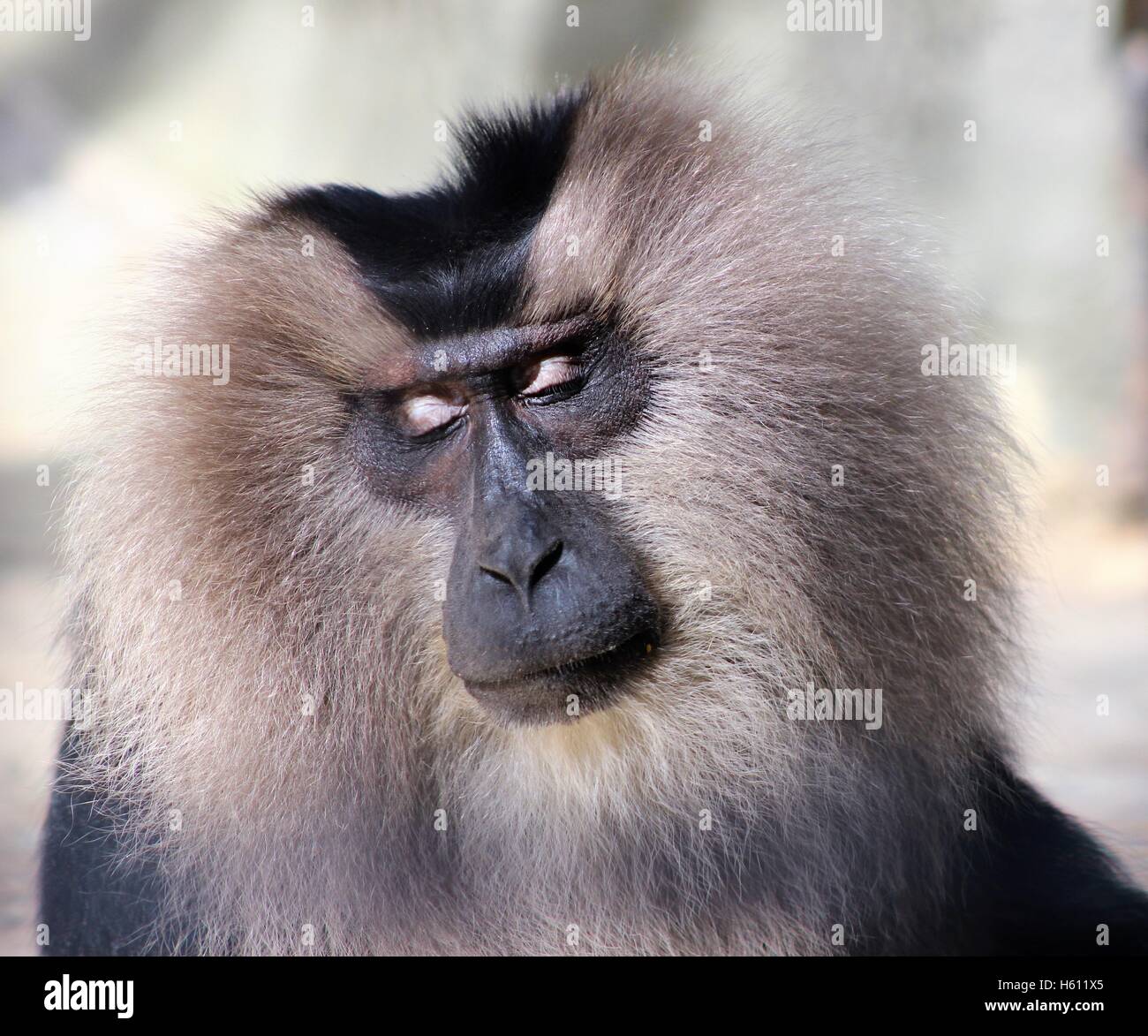In the heart of Africa's sprawling savannas, a unique dynamic unfolds between two iconic creatures: the cunning monkey and the regal lion. The term "monkey lion ragebait" encapsulates this fascinating interplay, shedding light on the survival strategies and territorial instincts that drive these interactions. Imagine a troop of monkeys dangling fruits just beyond the reach of an irate lion or mimicking its roar with audacious bravado. Such antics may seem trivial, but they carry profound implications for both species and the broader ecosystem.
This phenomenon isn't merely a spectacle of animal behavior; it's a window into the intricate balance of nature. By studying how monkeys provoke lions, we gain insights into the survival tactics of prey species and the strategic responses of apex predators. These interactions influence population dynamics, biodiversity, and even conservation efforts worldwide. Moreover, understanding such behaviors can inspire parallels in human psychology, offering lessons in strategy, cooperation, and conflict resolution.
| Category | Details |
|---|---|
| Species Involved | Monkeys (primarily vervet and baboons) and Lions |
| Habitat | Savannas and grasslands in regions like Serengeti and Maasai Mara |
| Behavioral Pattern | Monkeys teasing lions through vocalization, fruit dangling, and mimicry |
| Scientific Research | Studies conducted in Maasai Mara and Serengeti National Parks |
| Impact on Ecosystem | Helps maintain biodiversity and checks overpopulation |
| Reference Link | National Geographic |
The psychology behind monkey lion ragebait is as complex as it is compelling. Monkeys, renowned for their intelligence and social structures, engage in these behaviors not out of malice but necessity. Their actions are driven by survival instincts, testing predator boundaries while reinforcing group cohesion. For instance, when a troop of vervet monkeys teases a lion pride, they're asserting territorial claims and teaching younger members about predator avoidance. These interactions also serve as a form of vigilance, warning other animals of potential danger. However, the line between playful provocation and perilous confrontation is razor-thin, requiring acute judgment and agility.
- Vegamoies The Ultimate Guide To Elevate Your Plantbased Journey
- Hdhub4u 2025 Movie Download Your Ultimate Guide To Streaming And Downloading Movies
From the lion's perspective, being baited by monkeys presents a dual challenge—maintaining dignity within the pride and conserving energy for essential hunts. Lions, despite their majestic status, must balance patience with assertiveness. While younger lions might react impulsively to monkey antics, seasoned adults often adopt calculated responses. Ignoring minor provocations, they conserve energy for more critical pursuits. In doing so, they teach younger generations valuable lessons about restraint and strategy. Such interactions highlight the nuanced interplay of dominance and submission in the animal kingdom.
The ripple effects of monkey lion ragebait extend far beyond the immediate participants. These encounters contribute to maintaining ecological balance by ensuring no single species dominates. By keeping predators engaged, monkeys indirectly support biodiversity. This dynamic has significant implications for conservation efforts, underscoring the importance of preserving natural habitats. For example, the Serengeti ecosystem thrives due to such intricate relationships, where every species plays a vital role in sustaining the environment.
Real-life instances of monkey lion ragebait abound in the wild. One memorable incident occurred in the Maasai Mara, where a group of baboons hung fruits tantalizingly out of a lioness's reach. The ensuing spectacle drew both laughter and awe from onlookers, illustrating the humor and drama inherent in nature. Such events offer invaluable opportunities for researchers to observe animal behavior and draw parallels with human psychology. They remind us that survival strategies, whether in the jungle or urban jungles, often share common principles.
- Vegamovies Is Your Ultimate Destination For Movie Buffs
- Vegamovies18 Your Ultimate Guide To Streaming Movies Online
Scientific studies have uncovered fascinating insights into these interactions. Researchers have noted that monkeys tend to bait lions more frequently during resource-scarce periods, suggesting a strategic use of distraction to ensure safety. Moreover, lions exhibit varying responses depending on factors such as age, gender, and hunger levels. These findings enrich our understanding of predator-prey relationships and their broader ecological implications.
Conservation efforts must prioritize preserving the delicate balance of ecosystems like the Serengeti and Maasai Mara. Habitat destruction and climate change pose severe threats to wildlife, necessitating urgent interventions. Organizations dedicated to wildlife preservation play a crucial role in mitigating these challenges. By supporting initiatives that promote sustainable practices and raise awareness, individuals can contribute significantly to conservation goals. Every effort, no matter how small, helps protect the biodiversity essential for planetary health.
Connections between monkey lion ragebait and human behavior are undeniable. Both realms involve strategies of dominance, cooperation, and adaptation. In business, for example, companies often employ tactics reminiscent of these animal interactions to outmaneuver competitors. Similarly, in social settings, individuals navigate complex dynamics akin to those observed in the wild. These parallels highlight the universal nature of survival instincts and adaptive strategies.
The impact of such studies extends to industries beyond conservation. Innovations in artificial intelligence, robotics, and even marketing draw inspiration from natural behaviors. For instance, algorithms mimicking predator-prey patterns enhance machine learning capabilities. Meanwhile, marketing campaigns leverage insights from animal social structures to craft compelling narratives. Thus, understanding monkey lion ragebait offers benefits far beyond its immediate context.
In conclusion, the phenomenon of monkey lion ragebait represents more than just an intriguing animal behavior. It embodies the essence of survival strategies, territorial instincts, and ecological balance. By studying these interactions, we gain invaluable insights into the workings of ecosystems and the importance of preserving wildlife habitats. Furthermore, these observations inspire applications across various fields, enriching human knowledge and innovation. As we continue to learn and act, the future of biodiversity depends on our collective efforts to protect and cherish the natural world. Let this exploration serve as a reminder of the intricate connections that bind all life forms, urging us to tread lightly and responsibly on our shared planet.
- Mother Warmth Chapter 3 A Journey Of Love Growth And Understanding
- Sadie Mckenna Onlyfans Leaked The Untold Story You Need To Know


